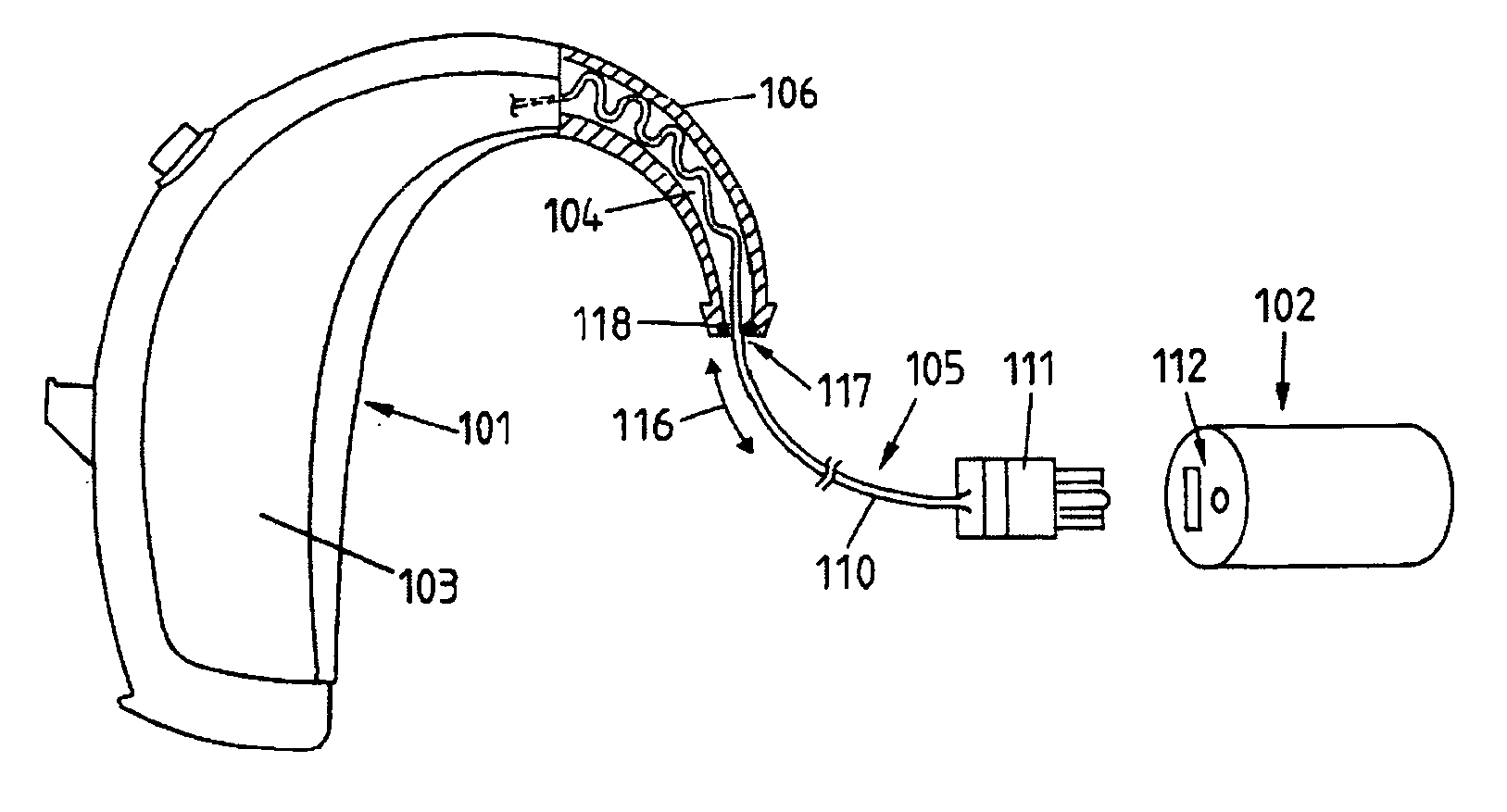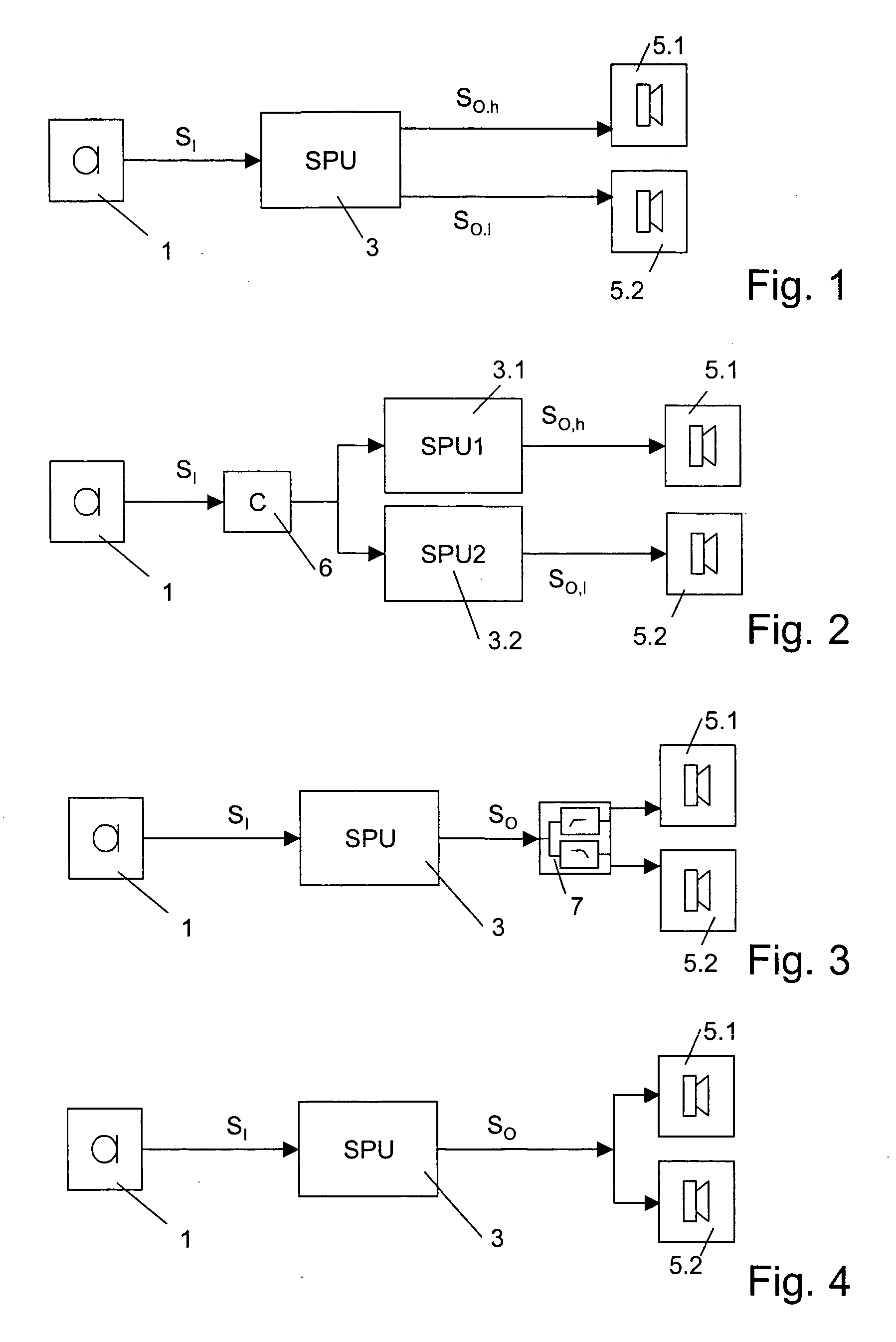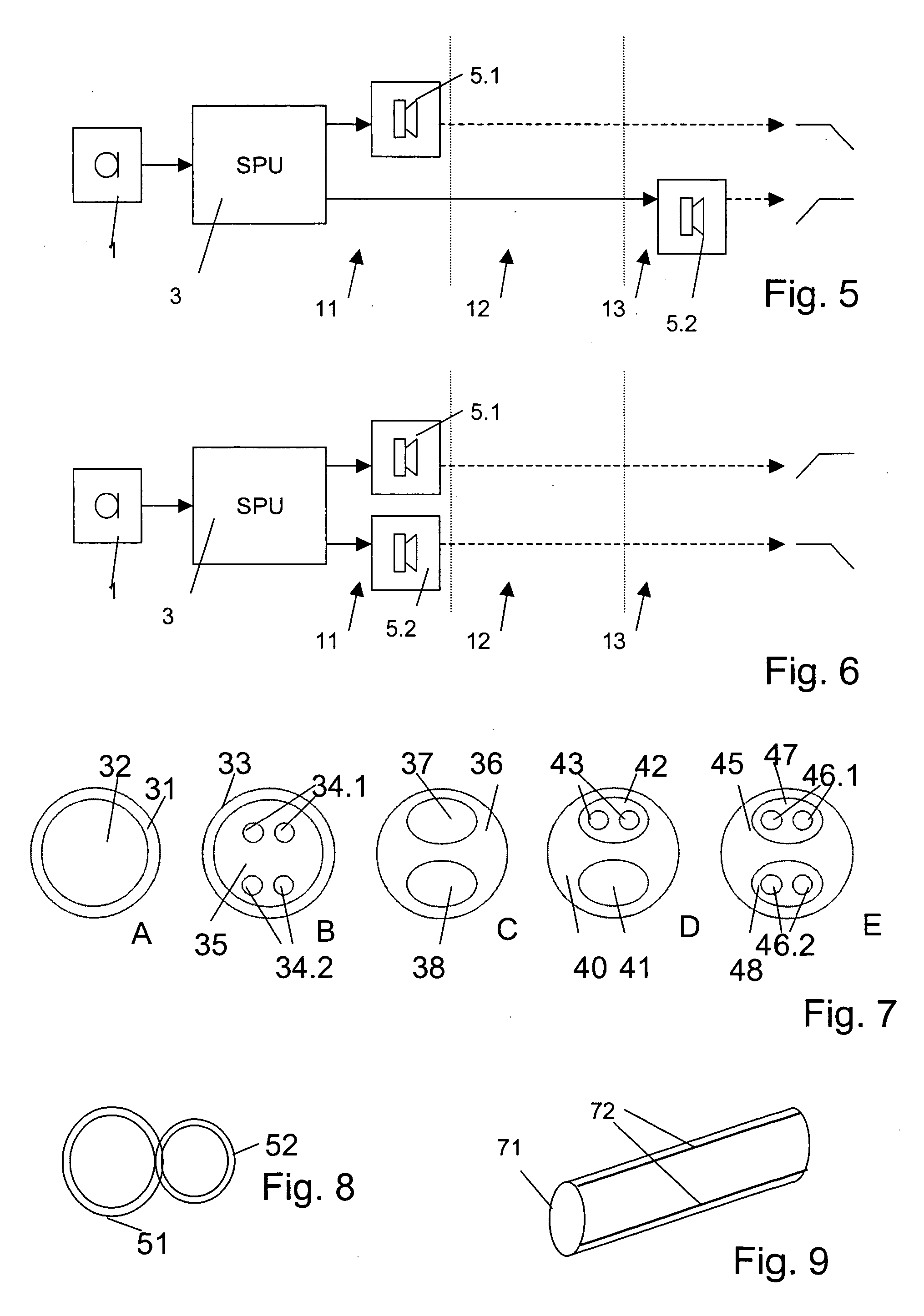Hearing instrument
a technology for hearing instruments and earpieces, applied in the field of hearing instruments, can solve the problems of limited receiver quality, limited maximum amplification, limited battery life, etc., and achieve the effects of enhancing resistance force, reducing pressure on the skin, and enhancing resistan
- Summary
- Abstract
- Description
- Claims
- Application Information
AI Technical Summary
Benefits of technology
Problems solved by technology
Method used
Image
Examples
first embodiment
[0282] In a first embodiment illustrated in FIG. 29 the fixation means 321 is a hollow reversibly compressible tubular element, for example made of compressible foam. The tube has a length of for example about 15 to 20 mm and is made of biocompatible material. This tube is placed in the ear canal before the receiver component is inserted. The inner radius of the tube is such that when the tube is placed in the bony part of the ear canal, the largest cross-section is smaller than the cross section of the receiver component to be inserted.
[0283] The receiver component has for example an oval shape and a cross-section that is minimized with regard to the cross-section of the ear canal, such that the amount of cerumen that is pushed into the ear canal during insertion is minimized. During insertion the receiver component is guided into the tube with the help of the oval shape of the component and possibly with an increased inner radius at the lateral end of the scaffold. During insertio...
second embodiment
[0288] In preferred realisations of the second embodiment, the holding elements are configured so as to provide an enforced resistance against longitudinal displacement while the radial pressure on the skin is kept minimal. In a first variant, shown in FIG. 31, holding elements 332.1 at or near the tube entrance (i.e. holding elements that are, when the in-the-ear-canal component 302 is inserted, towards on the side of the in-the-ear-canal component 302 towards the ear canal's exit, are stronger. This will somewhat enhance the forces during introduction of the in-the-ear-canal component 302, but provides mechanical stability against unwanted removal of the in-the-ear-canal component 302 without any additional force upon the ear canal skin, while the receiver 304 is in its intended position. The holding elements at the fixation means' end may also be stronger than the holding elements in a middle region so as to provide some resistance against an introduction of the in-the-ear-canal ...
PUM
 Login to View More
Login to View More Abstract
Description
Claims
Application Information
 Login to View More
Login to View More - R&D
- Intellectual Property
- Life Sciences
- Materials
- Tech Scout
- Unparalleled Data Quality
- Higher Quality Content
- 60% Fewer Hallucinations
Browse by: Latest US Patents, China's latest patents, Technical Efficacy Thesaurus, Application Domain, Technology Topic, Popular Technical Reports.
© 2025 PatSnap. All rights reserved.Legal|Privacy policy|Modern Slavery Act Transparency Statement|Sitemap|About US| Contact US: help@patsnap.com



